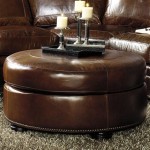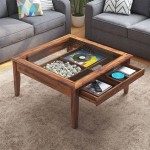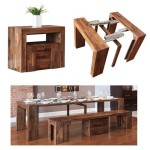How Tall Should A Nightstand Table Lamp Be: Understanding the Benefits
Selecting the appropriate nightstand table lamp involves considering various factors, with height being a crucial element. The height of a nightstand lamp directly influences its functionality, aesthetics, and overall contribution to the bedroom's ambiance. Understanding the optimal height and the benefits associated with it ensures a well-lit and comfortable sleeping environment.
The primary purpose of a nightstand lamp is to provide illumination for reading, relaxing, or performing other tasks while in bed. A lamp that is too short may cast shadows and fail to provide sufficient light, leading to eye strain and discomfort. Conversely, a lamp that is too tall might be visually overwhelming and create glare, disrupting the peaceful atmosphere necessary for sleep. Therefore, finding the ideal height is essential for maximizing the benefits a nightstand lamp offers.
This article will delve into the specific advantages of choosing the correct height for a nightstand table lamp, examining how it affects reading comfort, aesthetics, and overall bedroom functionality.
Improved Reading Comfort and Reduced Eye Strain
One of the most significant benefits of selecting the right height for a nightstand lamp is the improvement in reading comfort. The ideal height ensures that the light source is positioned correctly to illuminate the reading material without causing strain on the eyes. When the lamp is at the appropriate height, the light falls directly onto the book or tablet, minimizing shadows and glare.
Consider a scenario where the nightstand lamp is significantly shorter than the height of the mattress. In this situation, the light will likely be directed downwards, often obstructed by the reader's body. This forces the reader to lean forward or adjust their posture to receive adequate light, which can lead to neck and back pain over time. The inadequate lighting also requires the eyes to work harder to focus, contributing to eye strain, headaches, and fatigue.
On the other hand, a lamp that is too tall may shine light directly into the reader's eyes, creating glare. Glare is a major source of discomfort and can significantly reduce the ability to focus on the reading material. Constant exposure to glare can also contribute to long-term eye health issues. Therefore, the goal is to position the light source at a level where it provides ample illumination without creating harsh shadows or direct glare.
A general rule of thumb is to choose a nightstand lamp that is approximately the same height as the nightstand itself, or slightly taller, so that the bottom of the lampshade is roughly at eye level when sitting up in bed. This allows for a comfortable, downward-directed light that adequately illuminates the reading area. The type of lampshade also plays a role; a wider lampshade will typically distribute the light more broadly, while a narrower lampshade will focus the light more directly. Experimenting with different bulb wattages and lampshade styles may be necessary to find the perfect balance of illumination.
Ultimately, selecting a nightstand lamp of the appropriate height enhances the reading experience by minimizing eye strain and promoting a comfortable reading posture. This contributes to a more relaxed and enjoyable bedtime routine, which can positively impact the quality of sleep.
Enhancing Bedroom Aesthetics and Creating a Balanced Ambiance
Beyond functionality, the height of a nightstand lamp plays a pivotal role in the overall aesthetics of the bedroom. A well-chosen nightstand lamp can enhance the décor, create a balanced ambiance, and contribute to a sense of visual harmony within the room.
A lamp that is disproportionately small compared to the nightstand and surrounding furniture can appear insignificant and out of place. It may look like an afterthought, failing to contribute to the overall design scheme. Conversely, a lamp that is excessively large can overwhelm the nightstand and create a sense of imbalance within the room. It may draw too much attention to itself, disrupting the visual flow and making the space feel cluttered.
The height of the nightstand lamp should be considered in relation to the height of the headboard, the size of the nightstand, and the overall dimensions of the bedroom. A taller headboard may require a taller lamp to maintain visual balance, while a smaller nightstand may be overwhelmed by a very tall lamp. The goal is to create a sense of proportion and harmony, where the lamp complements the other elements in the room without dominating them.
Furthermore, the height of the lamp influences the way light is distributed within the room. A taller lamp will cast light over a wider area, illuminating more of the space, while a shorter lamp will create a more focused and intimate pool of light. Depending on the desired ambiance, one may prefer a taller lamp for general illumination or a shorter lamp for a more cozy and relaxed atmosphere.
The choice of lampshade material and color also contributes to the overall aesthetic impact. A translucent lampshade will allow more light to pass through, creating a brighter and more airy feel, while an opaque lampshade will direct the light downwards, creating a more focused and dramatic effect. The color of the lampshade can also influence the mood of the room; warm colors like amber and orange create a cozy and inviting atmosphere, while cool colors like blue and green create a more calming and tranquil environment.
Therefore, selecting the appropriate height for a nightstand lamp is not merely a matter of functionality but also a crucial element in enhancing the bedroom's aesthetics and creating a balanced ambiance. By considering the proportions of the room and the desired lighting effect, one can choose a lamp that complements the décor and contributes to a more visually appealing and comfortable sleeping environment.
Optimizing Bedroom Functionality and Convenience
The height of a nightstand table lamp also directly affects the functionality and convenience of the bedroom space. A well-positioned lamp can provide the right amount of light for various activities, such as reading, writing, or using electronic devices, while also offering easy access to the lamp's switch and other bedside essentials.
A lamp that is too short may require the user to bend over or reach awkwardly to turn it on or off, which can be particularly inconvenient in the middle of the night. Similarly, a lamp that is too tall may have its switch located too high, making it difficult to reach comfortably. The ideal height allows for easy access to the switch without requiring excessive stretching or bending.
Furthermore, the height of the lamp can influence the placement of other items on the nightstand. A taller lamp may take up more space, leaving less room for books, glasses, or other personal belongings. Conversely, a shorter lamp may allow for more space on the nightstand, but it may not provide adequate light for reading or other tasks. Finding the right balance between lamp height and available space is crucial for maximizing the functionality of the nightstand.
The type of lamp base and the style of the switch can also contribute to the overall convenience. A stable and sturdy lamp base prevents the lamp from tipping over easily, while a conveniently located switch allows for effortless operation. Touch lamps, for example, offer a particularly convenient way to turn the lamp on or off with a simple touch of the base.
In addition to providing light, some nightstand lamps also incorporate other useful features, such as USB charging ports or built-in outlets. These features can be particularly beneficial for charging electronic devices overnight, eliminating the need for additional power adapters and cords. The height of the lamp should be considered in relation to the placement of these features to ensure they are easily accessible and convenient to use.
Therefore, choosing a nightstand lamp of the appropriate height optimizes the functionality and convenience of the bedroom space. By considering the ease of access to the switch, the available space on the nightstand, and any additional features, one can select a lamp that enhances the overall usability and comfort of the sleeping environment.

The Definitive Guide To Table Lamps Lighting Company

Home 101 Elements Of The Nightstand

Your Essential Guide To Figuring Out Just The Right Size Bedside Lamps

Which Is The Best Bedside Light Here S How To Choose

Sconce Vs Lamp Which Is Right For Your Nightstand All In Stripes

Which Is The Best Bedside Light Here S How To Choose

How To Add Lighting Your Living Room Using Table Lamps La Z Boy Of Ottawa Kingston

Is A Table Lamp Necessary For Nightstands Anc Lighting

The Types Of Bedside Table A Complete Guide Petalwood Interiors

The Definitive Guide To Table Lamps Lighting Company
Related Posts








